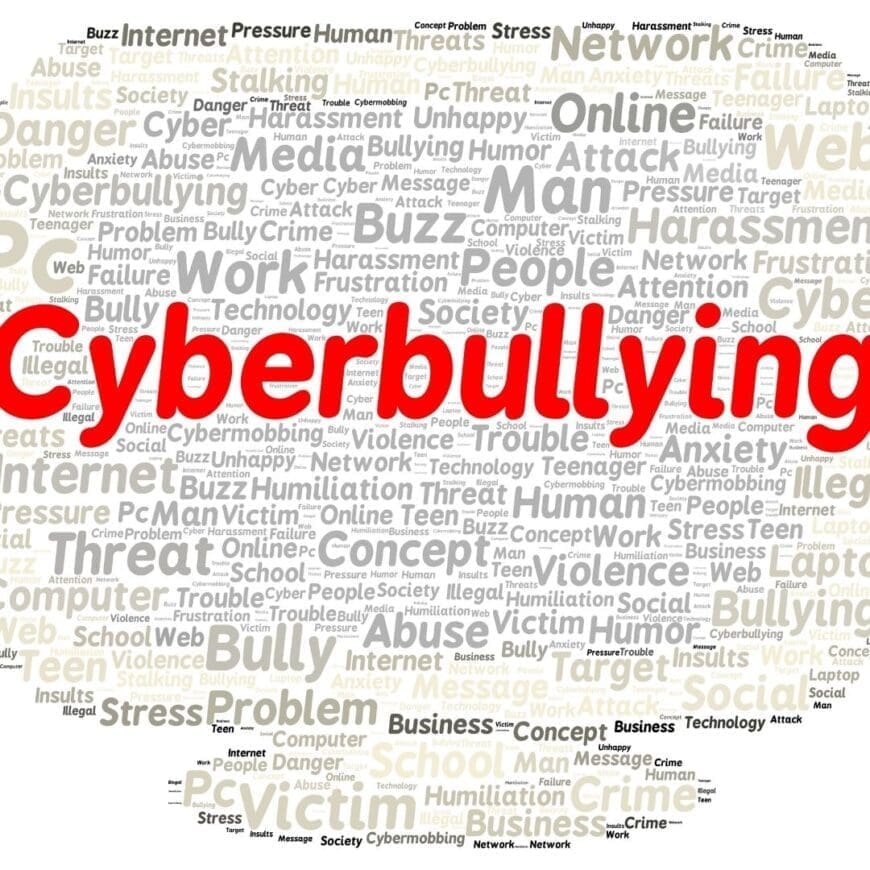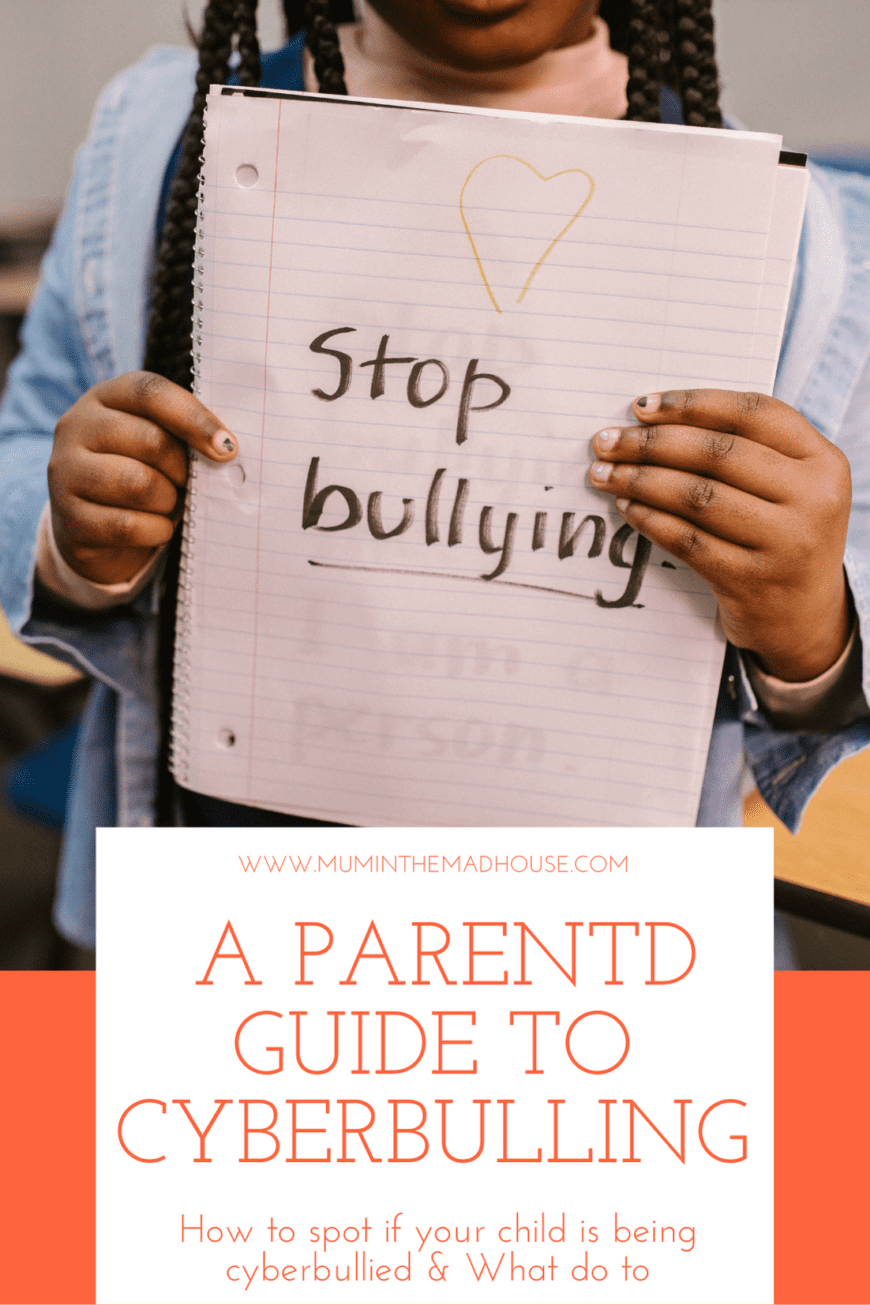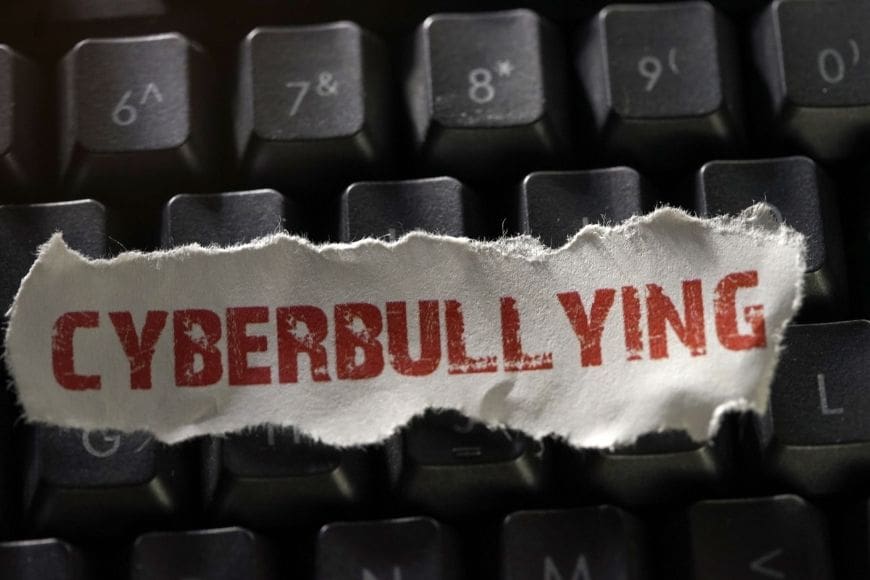One of our greatest fears as a parent is that our child is being bullied and now with the prevalence of mobile phones and social media it has opened a whole new side to abuse – cyberbullying or online bullying. It can be really hard to get your child to open up about being bullied, the signs can be difficult to spot and with cyberbullying, and it can be even more problematic as it isn’t confined to “in-person” bullying and abuse, and that’s why it’s crucial to stay safe on social media.

What is CyberBullying?
Cyberbullying is when someone is treated unacceptably and bullied online or through smartphones and tablets. It can happen via text messages, instant messaging apps, gaming sites, chat rooms, and social networking sites such as Facebook, Xbox Live, Instagram, YouTube, Snapchat, and TikTok.

Different types of cyberbullying
Harassment – Sending horrible, offensive, rude, and insulting messages and being abusive. Nasty or humiliating comments on posts, photos, and videos on social media sites, chat rooms, and gaming sites. This includes malicious gossip and rumours.
Exclusion – This is when others intentionally leave someone out of a group such as through group messages, online apps, gaming sites, and even from their bio on social media. This can be hard to prove that it is intentional and is really hurtful.
Impersonation – Creating fake accounts pretending to be that person online to talk about others or post embarrassing things which cause hurt and humiliation.
Flaming or Roasting – Intentionally using offensive or extreme language and getting into online arguments and fights. Cyberbullies do this to cause reactions and enjoy the fact it causes someone to get distressed.
Outing – This is when someone may share personal information about another or pressure someone to reveal secrets (including images and videos) and forward them to others. It also includes when children are intimidated into posting things they would rather not.

Bullying or Banter?
You would think reading the above that it is really easy to spot when something is cyberbullying rather than just the way people act on social media, but I can confirm that as a mum of two teen boys that it can be relatively easy for social media “banter” to slip into something more.
Navigating social media is challenging even for an adult. It can be hard to interpret what someone means when it is only via text and on-screen rather than in person. A lot of the nuance is lost when you take away face-to-face contact. CBBC has a great Quiz that you can do with your kids to see if they might have overstepped the banter mark.
One of the things I drummed into the boys was “Would you say this to your nana or share with your nana? – For me, it has always been about humanising the people behind the screen and this is a great way of doing that.
How to Recognise Cyberbullying
So how can you tell if your child is the victim of cyberbullying? It can be more difficult when children get older and are retreating as they often do as teenagers but some signs are:
- Sudden behavioural changes including low self-esteem and depression
- Aggressive behaviour
- Self-isolation includes not wanting to attend extracurricular activities such as sport
- Lack of appetite
- Hesitancy to go to school
- Over consumption of the internet and online games, hides their technology when you are around.

What to do if your Child is being Cyberbullied
Cyberbullying is on the rise, not just for children but in the workplace too, so it is important to let your children know that this isn’t their fault in any way, shape or form.
One of the most comprehensive ways of taking control of bullying is using the GET RID steps that I discovered via an Australian friend.
- G – go and block or delete the person doing the cyberbullying
- E – ensure you keep evidence of bullying (screenshots)
- T – tell a trusted adult
- R – report abuse – see further resources
- I – initiate control
- D – delete the bullying message
How to Protect your Child from Cyberbullying
It is just as important to teach resistance in the online world as in the offline world, in fact, more so in my experience. Digital resilience. We need to teach our children the skills to cope with all the online world sends their way and this isn’t something that they innately have, it is a learned life skill and our responsibility as parents. So these tips not only help protect our kids from cyberbullying but give them the tools to thrive in an online world.
- Be involved and take an active interest in your child’s screen time from the start. Treat the online world the same as the offline world, for them, both are the real world!
- Set boundaries from the start of their use of technology by introducing a screen rule agreement. This obviously changes as they grow up and needs to be age-appropriate.
- Model the behaviour you want from them. When my boys were younger we had house screen rules that applied to all of us including no screens at the table and no tech in the bedroom.
- Set up privacy settings and control on their devices (including passwords) and use a parental control app. As a parent, we can make decisions on what our kids have access to and there are often in App and device controls we can use to set age limits and time limits – check out Internet Matters safe set up guides. Make sure they know how to set up a good profile page and safe screen name/
- Knowledge is power – make sure that you understand the apps and games they are using, yep you have to keep up with the kids – National Online Safety is a great free resource for this.

Further Resources
- National Bullying Helpline – 0300 323 0169, 0845 225 5787 – Open from 9am to 5pm Monday to Friday
- Childline – 0800 1111 – Open 24 hours a day, 7 days a week
- Young Minds Parent Helpline – 0808 802 5544 Open from 9:30am – 4pm, Monday – Friday.
- Kidscape – 020 7823 5430 – Open 9.30am to 2.30pm Mondays and Tuesday
- Report Issues direct to Internet Service providers, Social Media platforms and gaming platforms:

We all parents should be aware of what our child is doing online until he becomes an adult, as not only it will help them for being protected from the bullies present online, but also it will help us to keep an eye on child.